
Ever wonder How to simmer in Instant Pot? It’s like a magic trick, right? You toss in a bunch of ingredients, press a button, and voila! A delicious, slow-cooked meal appears. But here’s the thing: understanding the Instant Pot buttons is crucial for effective simmering. It takes a bit of know-how and finesse to get it just right.
I’ve been there, staring at my Instant Pot, wondering why my stew turned out more like soup or my rice resembled a gluey mess. But after a lot of trial and error (and a few burned dinners), I’ve cracked the code on how to simmer in an Instant Pot. And today, I’m sharing those secrets with you that will have everyone asking for seconds! Let’s get cooking!
Jump to:
How to Simmer in Instant Pot
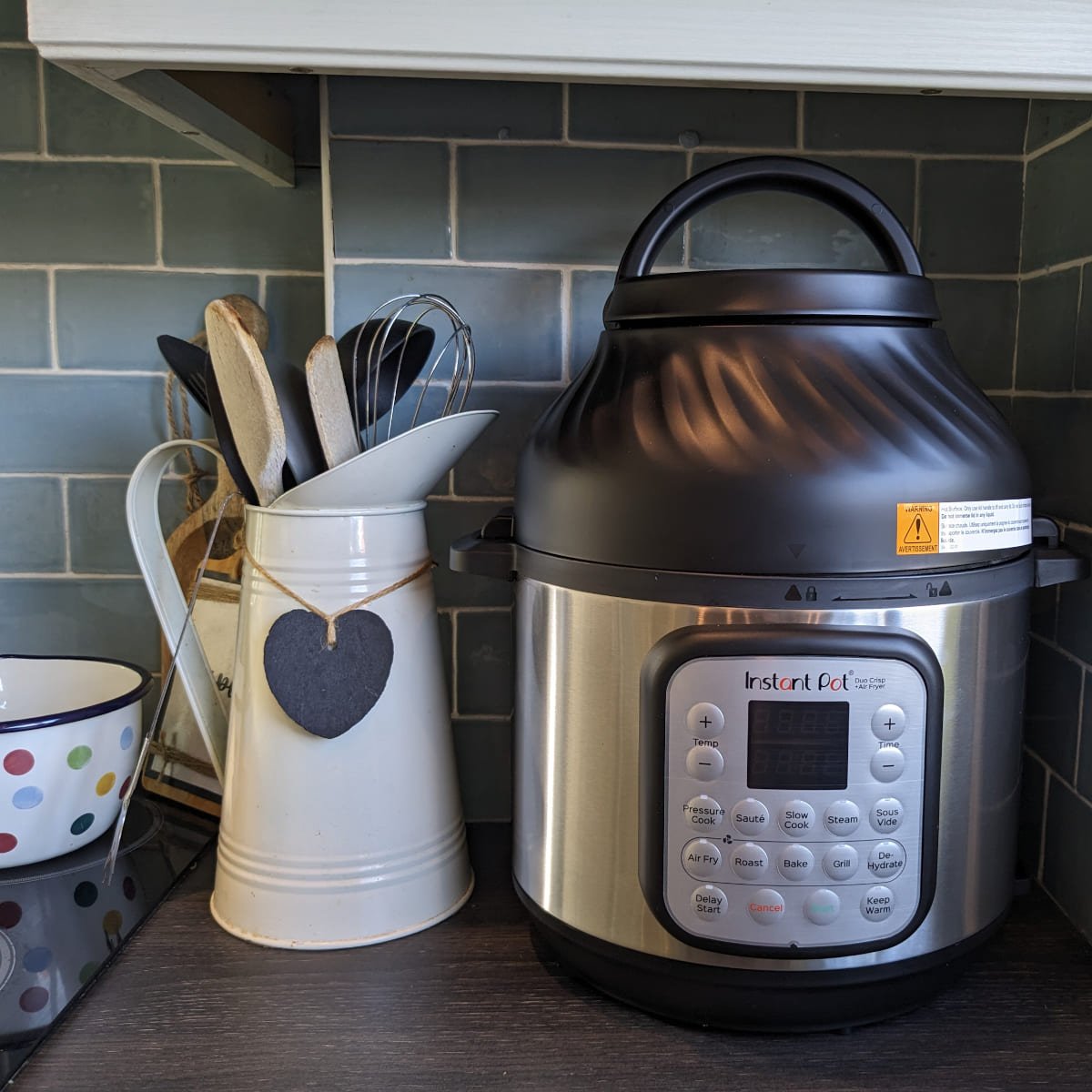
If you’re like me, you love the convenience of your Instant Pot. But did you know it’s also great for simmering? The slow cook function can be used to continue cooking ingredients until they reach the desired doneness and to cook off excess liquid to achieve the right consistency.
Using an Instant Pot for simmering is a total game-changer. You get those rich, slow-cooked flavors but in way less time.
Gather ingredients
Before you start simmering in your Instant Pot, make sure to gather all the necessary ingredients for your recipe. This typically includes the main protein or vegetables, liquid (such as broth or water), and any seasonings or aromatics you plan to use.
Having everything prepped and ready to go will make the simmering process smoother and more efficient.
Prep work
First things first—chop those veggies, trim any excess fat off the meat, and measure out your liquids and spices. A few minutes of preparation can really streamline your cooking process.
I like to use this time to also set out my Instant Pot and make sure it's clean and ready to go.
Set and cook
To simmer in your Instant Pot, start by adding your ingredients to the pot. Close the lid and make sure the valve is set to “sealing.” The Instant Pot also functions as a rice cooker, allowing you to cook rice while simmering other ingredients.
Press the “Sauté” button and adjust the heat level to “Less” or “Normal.” Once the ingredients start simmering, let them cook for the desired time, stirring occasionally if needed. Keep an eye on the pot to ensure the food doesn’t burn or stick to the bottom.
Natural release or quick release
When your simmering time is up, you can either let the Instant Pot naturally release pressure (which takes about 10-20 minutes) or do a quick release by carefully turning the valve to "venting."
If your recipe contains a lot of liquid or delicate ingredients, it's best to use the natural release method to avoid splattering or overcooking.
Season and serve
After releasing the high pressure, open the Instant Pot and give your simmered dish a final stir. Taste and adjust the seasoning as needed.
For those who prefer their sauce thicker, add a slurry of cornstarch mixed with water. Another option is to keep simmering on the "Sauté" setting for several extra minutes. Once ready, serve your dish while it's still steaming hot, and enjoy every bite.
Understanding Instant Pot Cooking Functions
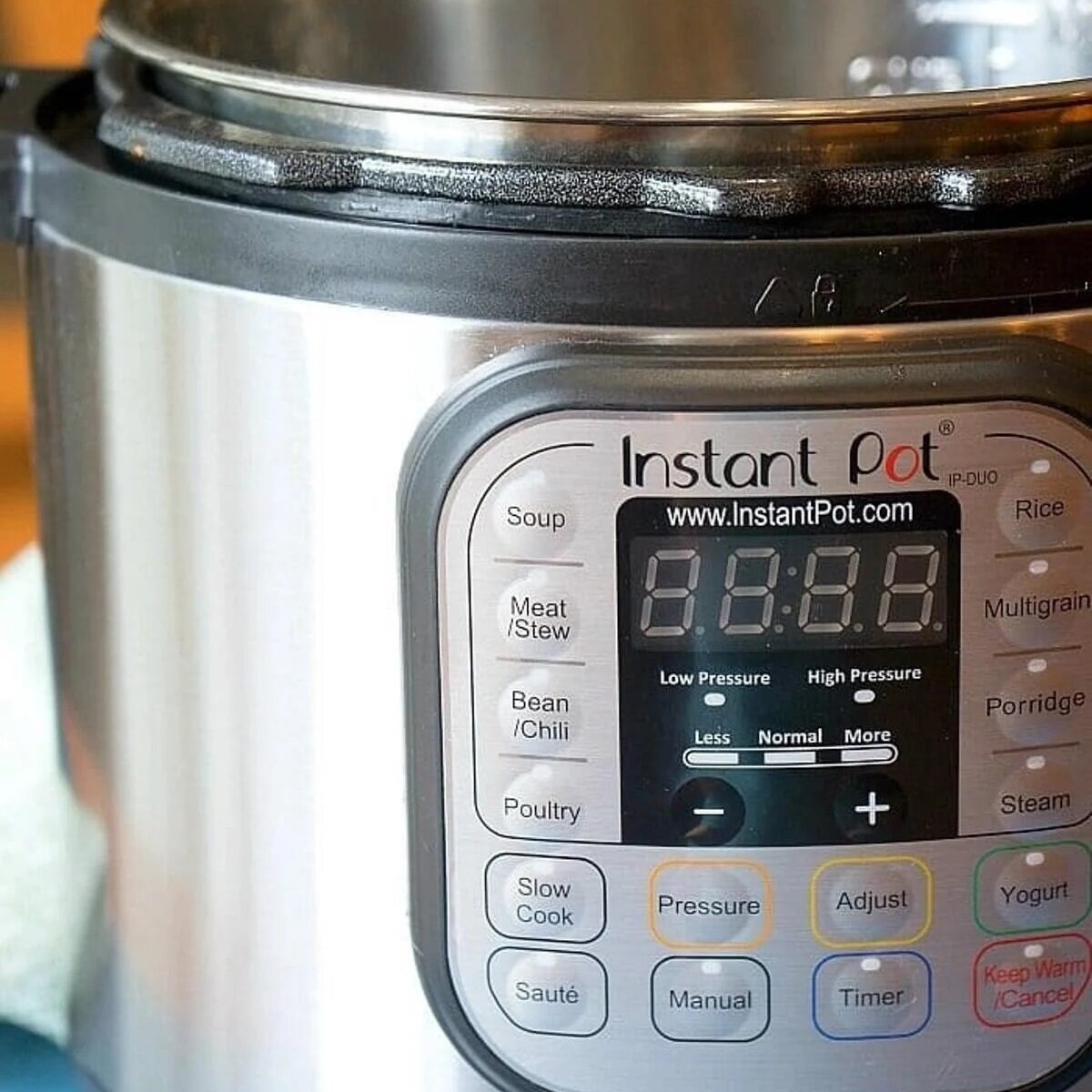
The Instant Pot stands out because it can do so much. Understanding the Instant Pot buttons and settings can help you use its different cooking functions effectively. You can use its cooking functions to simmer, sauté, pressure cook, and a whole lot more.
Dive into the details of these functions to understand how they’ll elevate your simmering game in the kitchen.
Saute mode
Using the Sauté setting on your Instant Pot allows you to gently simmer ingredients without any pressure. This makes it ideal for creating delicious soups, hearty stews, and rich sauces that require slow cooking.
To use the Sauté mode for simmering, press the "Sauté" button and adjust the heat level to "Less" or "Normal" depending on your recipe.
Pressure cooking function
Though you usually wouldn't use the pressure cooking function to simmer, you can still get a similar result by using low pressure for less time. This trick is handy for recipes needing a quick simmer, like when you're making grains or softening up some veggies.
To simmer using the pressure cooking function, add your ingredients and liquid to the pot, close the lid, and set the pressure to "Low." Cook for the desired time and release pressure according to your recipe.
Related: Why Do Chefs Use Pressure Cookers?
Slow cook setting
The slow cook setting on the Instant Pot mimics a traditional slow cooker and can be used for simmering recipes that require longer cooking times, such as braised meats or bean dishes.
To use the slow cook setting for simmering, add your ingredients to the pot, close the lid (with the valve set to "venting"), and press the "Slow Cook" button. Adjust the time and temperature according to your recipe, and let the Instant Pot work its magic.
Keep Warm function
The Keep Warm function on the Instant Pot is useful for maintaining a gentle simmer after cooking. This feature automatically switches on after the cooking cycle is complete, keeping your food at a safe, warm temperature until you're ready to serve.
If you need to simmer your dish for a bit longer, you can press the "Keep Warm/Cancel" button and then press the "Sauté" button to continue simmering at a low heat.
Instant Pot Simmering Recipes
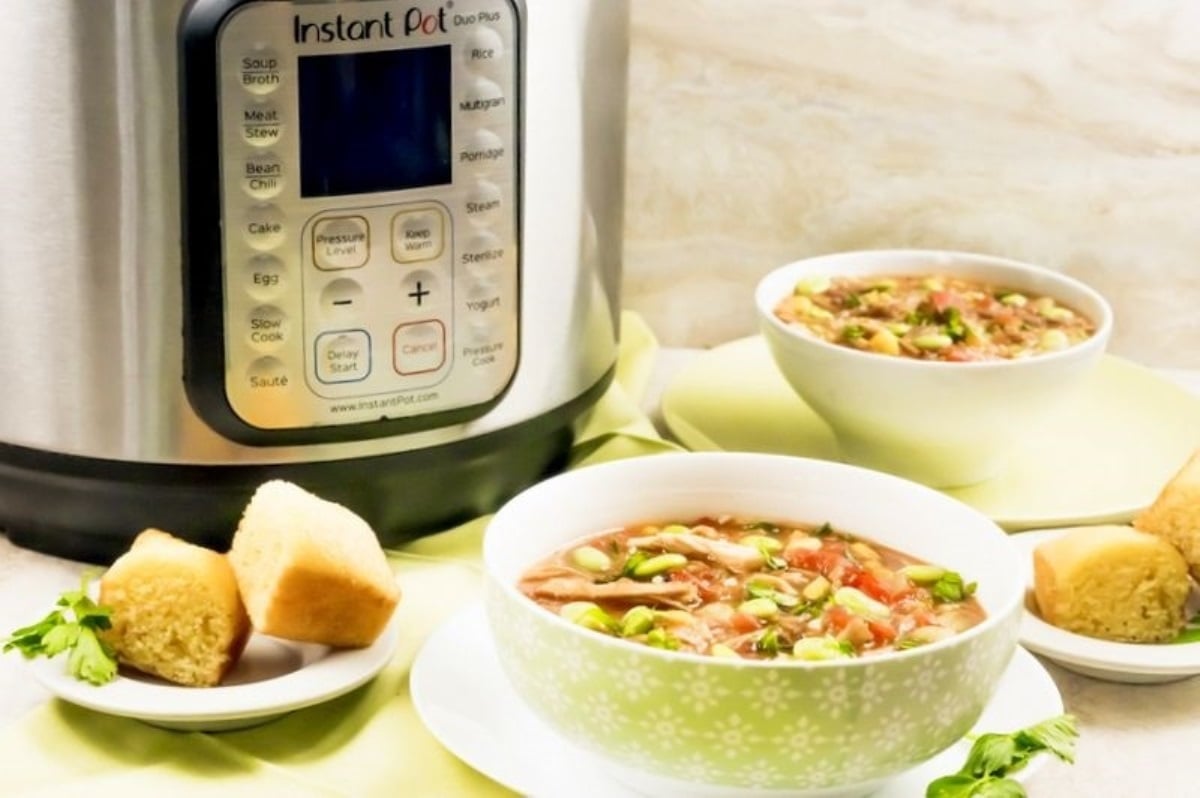
If you want to whip up tasty, comforting meals with almost no effort, grab your Instant Pot. This handy gadget can cook all sorts of dishes like hearty soups and stews, creamy beans, and tender veggies.
One thing I love about using the Instant Pot for simmering is how it brings out flavors in my dishes. The high-pressure and sealed lid really helps ingredients meld together, creating a taste you just can't get on a regular stovetop.
Ah, simmering recipes in my Instant Pot are like a warm hug on a chilly day! When I'm craving something comforting, I reach for my trusty pressure cooker. Whether it's frozen chicken breast pieces or a batch of brown rice, the Instant Pot handles it all with ease. I simply adjust the cook times and temperature ranges to get that perfect simmer.
One of my go-to recipes is a simple chicken and rice dish. I toss in some chicken breasts, add chicken stock, and maybe a few bay leaves for extra flavor. Then, I seal the lid, making sure the steam release valve is closed, and let the Instant Pot work its magic. In no time, I've got a delicious meal that's cooked to perfection.
The sauté function is another game-changer for me. I love how it allows me to brown the chicken before pressure cooking—it adds such a depth of flavor! And when I'm feeling adventurous, I switch it up with wild rice and vegetables. The Instant Pot makes it so easy to adjust the settings to suit whatever recipe I'm trying.
One feature I can't live without is the timer button. It's such a simple thing, but it makes all the difference. Whether I'm busy with work or running errands, I can set it and forget it, knowing that my meal will be ready when I am. And if I happen to get delayed, the keep warm function ensures that dinner stays hot until I'm ready to eat.
Overall, my Instant Pot has become my secret weapon in the kitchen. From pressure cooking to simmering, it handles it all with ease. And with the air fryer lid attachment, I can even give my dishes a crispy finish for that perfect touch. It's like having a personal chef right at my fingertips!
Soups and stews
When it comes to soups and stews, the Instant Pot is a true game-changer. Take this Instant Pot Boeuf Bourguignon recipe, for example. Traditionally, this classic French dish would require hours of simmering on the stove to achieve that perfect, melt-in-your-mouth texture. But with the Instant Pot, you can have it ready in just a fraction of the time.
Using the pressure cooking function makes it easy to break down those tough beef fibers fast. At the same time, it packs in all that great flavor from the wine, herbs, and aromatics. The end result? A stew that's melt-in-your-mouth tender and tastes like it's been on the stove for hours.
Don't just think of the Instant Pot for meat dishes. It's a fantastic tool for whipping up vegetable soups that are both nutritious and delicious. One of my favorites is this Golden Root Vegetable Soup. Packed with carrots, parsnips, and turmeric, it's a powerhouse of healthy ingredients.
Using the pressure cooking function can turn even the toughest vegetable fibers into smooth, delicious soups. This method not only brings out the flavor but also helps you make good use of any extra vegetables lying around in your fridge.
Beans and grains
Another area where the Instant Pot really shines is in cooking beans and grains. If you've ever tried to cook dried beans on the stovetop, you know that it can be a time-consuming and sometimes frustrating process. But with the Instant Pot, you can have perfectly cooked, creamy beans in a matter of minutes.
One of my go-to recipes is for Instant Pot Black Beans. I love to use them in everything from tacos to salads to grain bowls. The best part is that you don't even need to soak the beans beforehand - just rinse them, add them to the pot with some water and seasonings, and let the Instant Pot work its magic.
Cooking grains like rice, quinoa, and barley is a breeze with the Instant Pot. Its pressure cooking function takes all the guesswork out of it, delivering perfectly tender results every time without needing constant attention.
Vegetable dishes
Let's chat about how the Instant Pot can whip up some amazing veggie dishes. It's a champ at cooking hardy veggies like potatoes and carrots, but it also shines with softer ones like zucchini and bell peppers, making them tender and packed with flavor.
One of my favorite recipes is for Instant Pot Ratatouille. This classic French dish is usually made by simmering together a variety of summer veggies like eggplant, zucchini, and tomatoes. But with the Instant Pot, you can create a version that's just as flavorful in a fraction of the time.
The trick is to begin by browning your vegetables using the sauté feature of your Instant Pot; this step intensifies their flavor. Next, mix in some tomato sauce and herbs before sealing it up. Let it cook for a bit and soon you’ll have a deliciously healthy vegetable meal ready to serve over pasta or rice.
Also read: Instant Pot Sizes - What Is The Perfect Size For You?
Troubleshooting Instant Pot Simmering
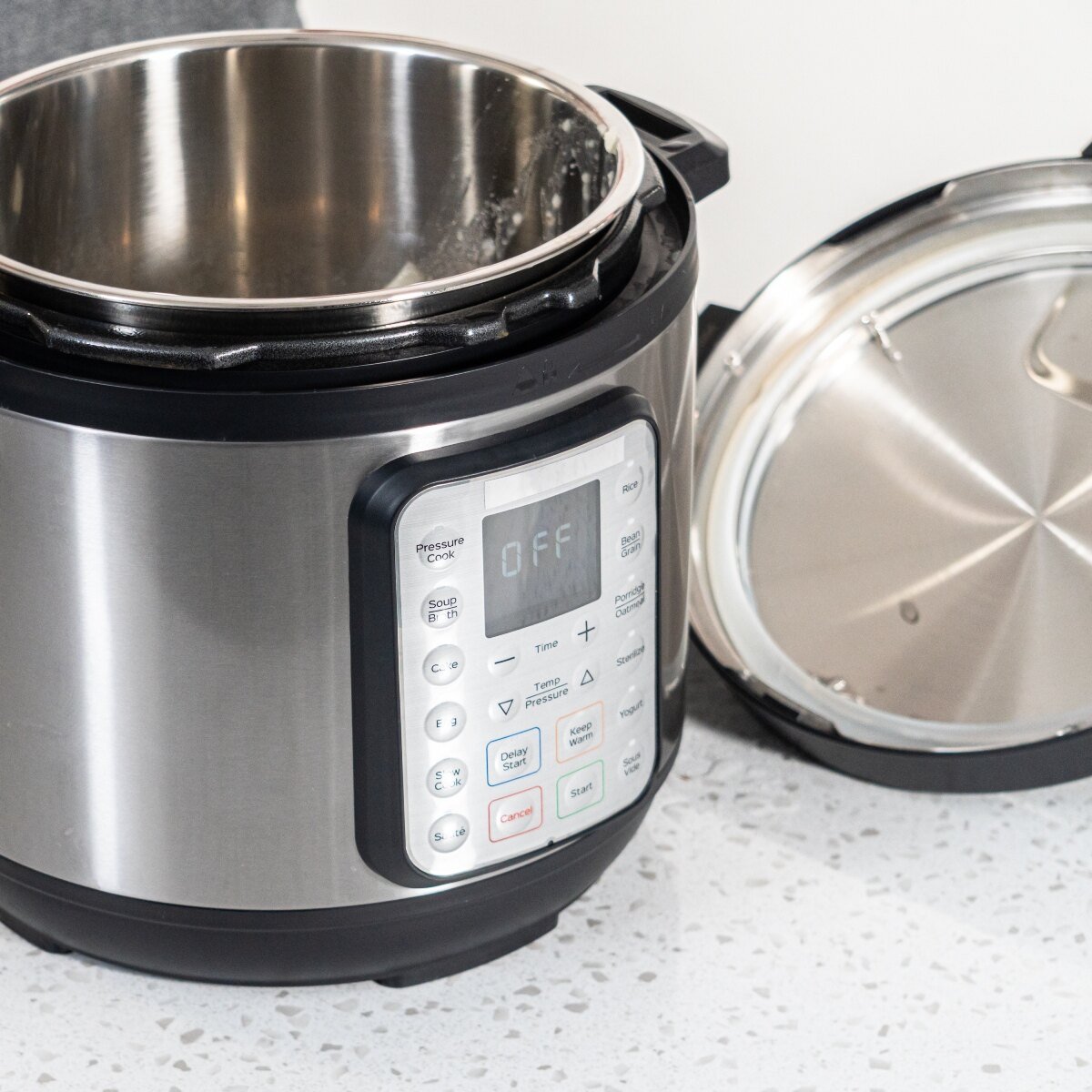
Although the Instant Pot usually works like a charm, simmering certain dishes might lead to occasional problems. Check out these pointers for avoiding and fixing those issues when they pop up.
Undercooked or overcooked food
One of the most common issues when simmering in the Instant Pot is ending up with food that's either undercooked or overcooked. This can happen for a few different reasons, but the most common culprit is using the wrong cooking time or pressure setting.
If your food is undercooked, the first thing to do is to check the recipe to make sure you're using the correct cooking time and pressure setting. If you are, then you may need to add a few extra minutes to the cooking time to allow the food to fully cook through.
On the other hand, if your food is overcooked, it's important to remember that the Instant Pot will continue to cook the food even after the pressure has been released. So, if you're not planning to serve the food right away, it's a good idea to release the pressure a few minutes early to prevent overcooking.
Adjusting cooking time
Another common issue when simmering in Instant Pots is figuring out how to adjust the cooking time for different types of ingredients. For example, if you're cooking a dish that contains both tough cuts of meat and delicate veggies, you may need to adjust the cooking time to ensure that everything is cooked to perfection.
One way to do this is to use the pot-in-pot method, where you place the more delicate ingredients in a separate, oven-safe dish inside the Instant Pot. This allows you to cook the tougher ingredients for longer without overcooking the more delicate ones.
Another option is to use the Instant Pot's "Delay Start" function to add ingredients at different times during the cooking process. For example, you could start by cooking the tougher ingredients for a few minutes, then add in the more delicate ones towards the end of the cooking time.
Preventing scorching
Scorching is another common problem when simmering in the Instant Pot, especially when cooking dishes that contain a lot of starchy ingredients like rice or pasta. Scorching occurs when the food sticks to the bottom of the pot and starts to burn, which can give your dish an unpleasant burnt flavor.
To prevent scorching, it's important to make sure that there's enough liquid in the pot to create steam and prevent the food from sticking. You should also avoid stirring the food too much, as this can cause it to stick to the bottom of the pot.
If you notice your food starting to scorch, add a splash of liquid and scrape up any browned bits from the bottom. Using the "Saute" function to brown your ingredients before adding liquids can also help prevent sticking.
Dealing with pressure release
Simmering with an Instant Pot requires you to manage pressure releases properly. Some recipes call for a quick release while others suggest using natural release—both are crucial steps depending on what you're cooking.
For a quick release, turn the valve to "venting" and let the steam escape fast. This method works great for dishes with short cooking times or delicate ingredients that can overcook easily.
Alternatively, you can let the pressure release naturally, which takes about 10-20 minutes. This method works well for dishes that need more cooking time or have ingredients that do better with a slow and gentle release.
Whichever method you choose, it's important to be careful when releasing the pressure, as the steam can be very hot and can cause burns if you're not careful. Always use a long-handled spoon or tongs to turn the valve, and make sure to keep your hands and face away from the steam.
FAQ'S
While the high-pressure cook setting is typically used for recipes requiring rapid cooking, you can use the normal pressure setting for simmering in your Instant Pot. This allows for a gentler cooking process, ideal for simmering soups, stews, and sauces to perfection.
To ensure your food is cooked thoroughly when simmering in your Instant Pot, follow the recommended cook times provided in your recipe. Additionally, use the natural release method after cooking to allow any remaining pressure to release gradually, ensuring that your food is fully cooked and tender.
Yes, the keep warm function is perfect for maintaining the temperature of your simmered food until you're ready to serve. Simply select the keep warm function after the simmering process is complete, and your food will stay warm and ready to enjoy.
Yes, the timer button is a simple yet essential feature for simmering in your Instant Pot. Use it to set the desired cook time for your simmering recipes, allowing you to achieve perfect results every time without any guesswork.
Conclusion
Simmering in an Instant Pot doesn't have to be a mystery. With a few simple tricks and a dash of patience, you can create meals that taste like they've been cooking all day, even when you're short on time.
Getting the hang of simmering with your Instant Pot comes down to knowing your ingredients, picking the right settings, and giving those flavors time to blend. Don't shy away from trying out new recipes or techniques—that's what makes cooking exciting!
So go forth and simmer with confidence. Your taste buds (and your hungry family) will thank you. Happy Instant Potting!





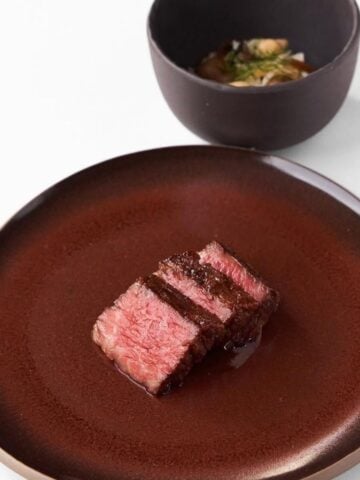

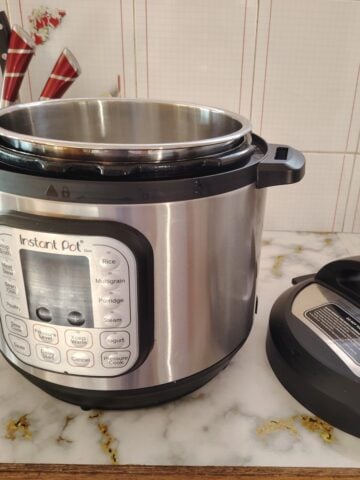


Leave a Reply